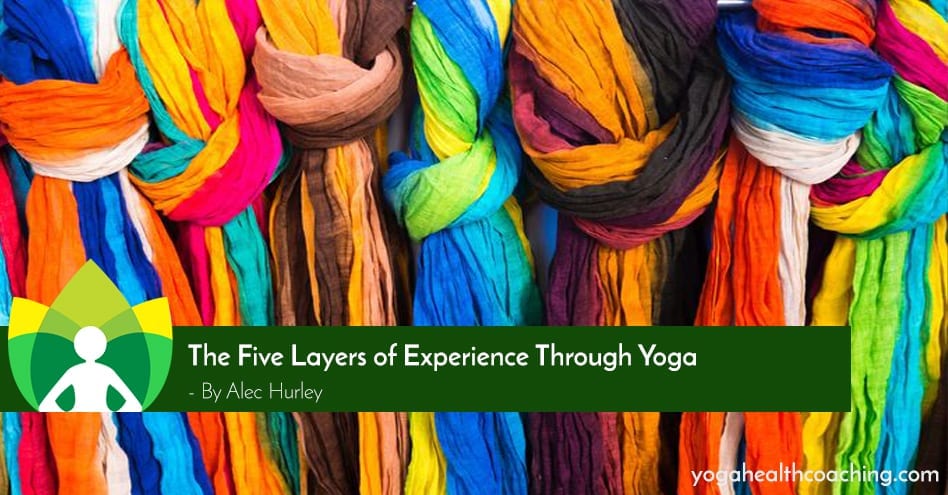
The Five Layers of Experience Through Yoga
The experience of yoga goes deeper than stretching the hamstrings. And practitioners develop a consistent practice they will begin to notice shifts. This is due to the effects that yoga has on opening the physical body by bringing greater sensitivity to the subtle layers. Each layer allows us to experience something unique but first lets begin with what sensation is.
The language of sensation
Our body speaks to us through the language of sensation. This is the language of tiny impulses expressed in many forms through all of the layers of the body. And just like any other language, it takes time to learn and our understanding deepens over time. The Yoga classroom is where I began to learn this language and feel the sensations of my body. Through learning this language yoga has become my personal sanctuary. My place to create deeper states of wellness through attention and focus to all the layers of my body.
The Koshas
Kosha means sheaths or layers of our body in yoga philosophy. They range from dense to subtle and are interconnected without any real separation. Together, the koshas form a treasure map for the journey of self-discovery. You will notice as we go through the koshas the influence one has to to the next and the power of a consistent yoga practice.
The Annamaya Kosha – Physical/food layer
There are many routes to the yoga practice but in the west most enter through the physical exercises known as asana practice. This layer makes up our physical physical body ( bones, muscles, organs, etc.) This is the layer directly influenced by the physical practice of yoga. Here is where we deepen our understanding of the more physical sensation through yoga asana practice. Feeling your feet on the floor and touching the sky above you. When grounded in this kosha, physical awareness is opened and you will find your posture naturally aligns.
The Pranamaya Kosha – Energy layer
This layer is also affected by the physical practice and related to the breath, the nervous system and your inner world. The breath is used to unblock stagnation in the whole system, and believe me, we all have it. The breath directly affects the nervous system. Think fast shallow breathing and its correlation to anxiety and fear. Now think of how a slow, deep and rhythmic breathing pattern soothes your whole being. When breathing practices (pranayama) are regular, deeper connection and control of the nervous system is achieved.
The Manomaya Kosha – Mental/emotional layer
This is where the impacts of your yoga practice can be reflected almost immediately. When physical exercise and controlled breath are combined (the previous two layers) balance and flow are restored to this layer fairly quickly. Ever feel calm and content right after a yoga class? This kosha is related to our sense of self, our mind and our relational capacity. The manomaya kosha is an easy place to get stuck and accumulate stagnation. Do you know someone who is all in their head? The practice of Japa yoga or repeating affirmations directly affects this layer by untying the tethers of the mind which so easily get wound up. When balance is cultivated here, our senses begin to shift inward and the internal language of our mind is understood.
The Vijnanamaya Kosha – Intuitive/wisdom layer
Consistency is your ally. This Kosha is the seat of our intuition, or our higher connection. After months or years of regular practice you will notice things begin to shift. As the layers become more subtle our awareness expands and the language of our body goes beyond the five main senses. This layer opens up when the previous three are active with a regular yoga practice to help keep them clean and flowing.
The Anandamaya Kosha – Bliss layer
Oooommmmmm. This most subtle layer is our seat of bliss. The center most kosha yet its the most expansive in its experience. Regular meditation helps connect with this layer and to maintain these expansive qualities. Think interconnectedness and vastness for the sensations coming through here.
Compassion, awareness and curiosity
As we practice yoga and meditation our old stored emotions, habits, experiences and just plain old stuff comes up. When it does come up, inviting a sense of compassion is key. Presencing this is what the practice of yoga is designed to do. Imagine looking back after decades of practice and having the mental clarity to learn the deeper lessons of the choices made earlier in life. After all, yoga is a powerful way to learn the language of sensation so get curious about what it is saying.



